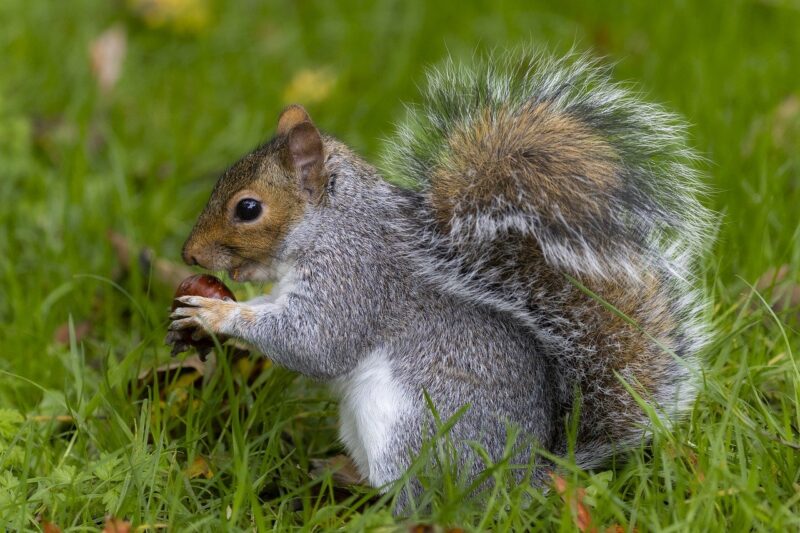Why Squirrels Are Smarter Than We Think: Discovering the Hidden Intelligence of Urban Wildlife
November 13, 2024

Squirrels often scurry around our urban environments, darting between trees, nosediving for buried acorns, and leaping across power lines. While many people perceive these agile creatures as simple pests raiding gardens and bird feeders, evolving research shows there’s a lot more beneath their fluffy tails than meets the eye. In this article, we’ll dive deep into the surprising intelligence of squirrels, exploring their behaviors, problem-solving abilities, and unique adaptations that illustrate their complex nature.
1. Squirrels: The Urban Survivors
Squirrels have successfully adapted to urban environments, thriving amid human expansion. They are resourceful foragers, capitalizing on a mixture of natural and human-made food sources. Their ability to exploit urban landscapes to secure food is a testament to their intelligence.
Squirrels possess remarkable spatial memory, allowing them to remember the precise locations of thousands of nuts and seeds they bury during fall to survive the winter. This behavior isn’t merely a survival tactic; it showcases cognitive abilities that can rival some primates. Through extensive research, scientists have discovered that squirrels even engage in what is called “deceptive caching.” When being watched, they will pretend to bury food or change their caching method to confuse other foragers, demonstrating advanced problem-solving skills.
2. Communication: The Language of Squirrels
Squirrels are vocal creatures equipped with a sophisticated communication system. They use a variety of chirps, barks, and chattering sounds to express different emotions and to alert other squirrels of potential dangers.
One of the most fascinating aspects of their communication is the way they utilize tail signals. A flick of the tail can convey alarm signals; they display an impressive understanding of their environment and their fellow squirrels’ emotions. For instance, if a hawk is near, it communicates urgency and alerts nearby squirrels to take cover through specific tail movements, ensuring their safety and enhancing group survival.
3. Problem Solving: The Clever Food Forager
Research shows that squirrels are not just clever—they’re excellent problem solvers. Studies involving maze tests have shown that they can maneuver through complex obstacles to obtain food rewards. In fact, scientists have documented that squirrels can figure out how to open containers to access food inside. They exhibit different techniques, using whatever tools are available in their environment to get to hard-to-reach snacks.
Researchers have even noted that squirrels will learn from their mistakes. In an experiment conducted by the University of California, squirrels were presented with a button that would dispense food after a specific sequence of actions. Upon failure, the squirrels repeated the task, gradually improving their technique with each attempt. This capacity to learn from experience reflects a depth of cognitive functioning often underestimated.
4. Social Behavior: Learning Through Observation
Squirrels demonstrate social intelligence that allows them to cooperate and learn through observation. Young squirrels learn essential survival skills by watching and mimicking their parents or other older squirrels in their community. They observe how to forage for food, cache it effectively, and navigate the landscape without encountering predators.
Moreover, certain species like the Eastern Gray Squirrel have been observed socializing with other species, allowing them to adapt better to varied urban ecosystems. This social behavior enhances their opportunity for survival and illustrates their ability to thrive through cooperation and adaptability.
5. Urban Adaptations: Squirrels in the City
The rapid urbanization of landscapes has pushed squirrels to adapt dramatically. They have learned to traverse complex infrastructures, from traffic-filled streets to high-rise buildings. Their nimbleness and agility enable them to adapt to the human environment and use constructed spaces like parks, gardens, and rooftops as extensions of their habitat.
A fascinating example of their adaptation is their ability to navigate traffic. They assess their surroundings, noting when to cross roads safely. Although there are risks, many researches suggest squirrels’ capacity to judge distances and times gives them an edge over other urban wildlife offenses. They can measure speed and predict the arrival of vehicles—demonstrating a level of situational awareness rarely associated with small mammals.
6. The Role of Squirrels in Ecosystems
Beyond their intelligence, squirrels play an essential ecological role. They act as natural seed dispersers, contributing to forest regeneration. They bury nuts and seeds that may later sprout into trees, making them critical players in maintaining the health of urban and rural ecosystems alike. In essence, their foraging strategy inadvertently promotes biodiversity and supports the regeneration of forest lands.
As such, preserving urban wildlife, including squirrels, contributes to the sustainability of our environment. Educating communities about the role of squirrels helps foster appreciation and encourages protective measures, ensuring they continue to thrive in the cities.
7. Conclusion: Reevaluating Our Perception of Squirrels
Squirrels exemplify how urban wildlife can possess intelligence beyond our initial perceptions. Their adeptness at survival, advanced problem-solving skills, and social learning behaviors mark them as truly remarkable creatures. By taking the time to understand and appreciate their hidden intelligence, we can foster positive interactions with our urban wildlife and recognize the essential roles they play in the ecosystem. So next time you spot a squirrel in your backyard or city park, take a moment to appreciate the intricate life they lead and their impressive capabilities.
As we strive to coexist with urban wildlife, recognizing the intelligence of creatures like squirrels allows us to cultivate a sense of empathy towards these complex animals. They may just be the furry acrobats of cityscapes, but they are also sentient beings deserving of our respect and understanding.







